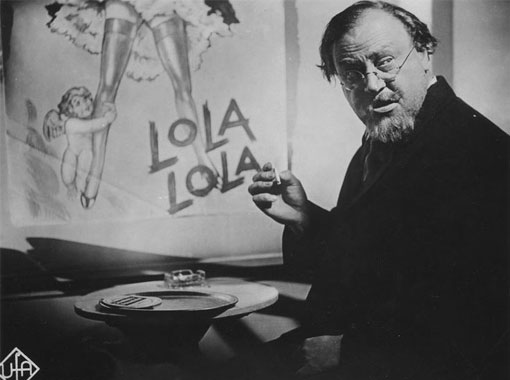Mandingo (1975)
![]()
Mandingo (1975) Directed by Richard Fleischer
This flagitious film was received on the day of its release in 1975 with hostile and critical disapproval, and I am not surprised because today – despite the fact that many contemporary retrospective essays have praised it as an underrated work of cinema – it remains the subject of controversy. It is an exceedingly arduous task to establish objective criteria when a film touches on issues that are as transcendent as they are sensitive to modern society; indeed, simply having an opinion on them can be an act of formidable audacity. There are many high – and low – budget Hollywood films that have dealt with what was probably the most ignominious period in American history: slavery. Some productions were made with noble intentions and for revisionist purposes, others were simply cheap and offensive depictions of those infamies. Mandingo was released in 1975, a time of socio-political reform and sexual revolution; evidently, the sensibilities -or frivolities- of this grandiloquent production are consubstantial with a very particular milieu, a juvenile sentiment drastically opposed from that of our contemporaneity. This sweeping production about the melodrama of a ruthless slave owner and his detestable son in the antebellum American Deep South can be considered either a faithful depiction of the grotesque cruelty of the times when slavery was accepted and totally legal or an exploitative, sensationalist portrayal of slavery. Frankly, I think both make it a piece of historical cinema with dichotomous, even ambiguous, aims.
However, with all that said, I strongly disagree with those who dismiss it a racist film. It is delusional to believe that a film that features what are arguably the most despicable white characters ever put on film is racist. The script is riddled with flaws, which are materialized in excesses where operatic sequences of graphic violence and carnality are senselessly monumentalized, yet the vicious storyline is still about abhorrent individuals making slaves’ lives a living hell. For my perspective, there is nothing more honest yet brutal than making a film that dwells only on the most savage and nefarious aspects of that inglorious period in history. The screenplay written by Norman Wexler is based on the lurid novel by Kyle Onstott, although some tonal adjustments were made in this adaptation, the film maintains a high fidelity to the literary sleaze of the novel. I would not want to claim that the atrocities we see on screen are those of a deep meditation on the horrors of slavery, but neither would I want to assert that it is a portentous exploitation film. In short, what I can say is that versatile director Richard Fleischer and his team have achieved something, not with precision but with enough complexity to generate a profound discussion.
Widower Warren Maxwell (James Mason) owns a plantation in the deep south of the United States, which he runs with his son Hammond (Perry King). They both own a large number of slaves, which they sell from time to time. Among these slaves is a strapping “Mandingo” named Mede (Ken Norton). The slaves called “Mandingo” are used to make them fight and are considered the strongest. The plot revolves around the severe treatment of the slaves by their owners, including rapes and tortures that seem to be taken from the bloody irrationality of the Holy Inquisition. While these merciless tortures take place at the plantation of the authoritarian Warren Maxwell, a torrid love triangle intervenes in the drama. Hammond marries his possessive and hysterical cousin (Susan George) at his father’s behest, but the relationship, when it becomes nothing more than a frustrating and toxic obligation to continue the patriarchy of the Maxwell legacy, grows abusive and deadly. Even more so, when Hammond spends long, romantic times with one of the most beautiful slaves, with whom he develops a certain empathy. The enormity of emotions that are elicited from this tragic and decadent environment are overwhelming, one would not think that a story with such sinuous narrative asymmetry could express anything substantial in its outrageous textures, but it does, and the expression is forceful. Especially James Mason’s garrulous and tyrannical performance in tandem with Perry King’s intensity.
The malevolence of these characters eclipses any trace of empathy making it almost impossible to feel entirely at ease with watching a two-hour movie without any redeemable characters; the experience is even more uncomfortably imposing when you begin to discern towards what cold and pessimistic conclusion the story is leading you. Ken Norton’s aptly stiff performance as the robust and virile “Mandingo” unravels the more existentially complex issues in the plot, in part the essence of this character is in embodying the strength of the African people who were uprooted from their continent to serve the white man; a strength that is presented with many contradictions. The most heartbreaking thing that can be observed in the allegorical qualities of this character is his pusillanimous attitude towards his black brothers. Ken Norton’s gruff face, who was a great professional boxer in real life, reveals very effectively the desperation that condemns him to live under the white man’s ideals and not his own. In one of the film’s most barbaric sequences, Hammond organizes a betting match in which Mede must fight another slave fighter to the death. This gruesome fight segment marshals the quasi-psychopathic derangement of our ancestors in a visceral scenario where both blacks and whites, slave or owner, are dehumanized in a myriad of ways. The whites, who relish the sight of two human beings killing each other for the amusement of their ambitious owners, are captured by a frenetic and incisive visual scheme where exacerbated thrills come to be seen as the ultimate manifestation of a soulless and criminal society, where amorality rules under the scrutiny of absolute insanity. The two black fighters, on the other hand, are transformed into two wild and rabid animals, without origin and without principles, completely abandoned of any logic. They illustrate the effects of the obscurantism imposed by the whites in the times of slavery.
The superfluous nudity and sexual scenes can be intrusive and even gratuitous, just as the gross-out violence can seem unnecessarily over-the-top in pushing the levels of obscenity into b-movie territory, yet this has to be one of those major A-grade exploitation flicks that is totally disassociated with kitsch. In effect, this production manages to divorce itself from the tacky exploitative facade with a laudable, achingly gorgeous compositional system, where the priorities are in crafting an internal montage that directs the narrative through a contemplatively visual field. The capacious mise-en-scène not only makes excellent use of the negative space of the framing but also keeps it functional to the epic proportions of the tragedy. In the end, as monstrous as what we witness is, I am sure it does not do justice to the actual brutality of slavery, but it is unquestionably one of the films that comes closest to being one of the truest renditions of those atrocities.






